NGABEN / PITRA YADNYA : Cérémonie de crémation collective / Collective cremation ceremony
À cause du coût des crémations, il est commun d'enterrer le mort et d'attendre d'avoir assez d'argent pour faire la crémation ou qu'une crémation collective soit décidée dans le village, ou des villages (en général tous les 3 à 5 ans) pour pouvoir y participer. Pour les grandes crémations, il y a au moins un sarcophage en forme d'animal à taille humaine ou plus grand qui va accompagner l'âme du défunt vers sa libération. Le sarcophage (lembu) peut prendre la forme d'un taureau pour l'homme et d'une vache pour la femme.
Because of the cost of cremations, it's common to bury the deceased and wait until there's enough money to carry out the cremation, or until a collective cremation has been decided upon in the village, or several villages (usually every 3 to 5 years) to be part of it. For cremations, there is at least one animal-shaped sarcophagus, human-sized or larger, which will accompany the soul of the deceased to its release. The sarcophagus (lembu) can take the form of a bull for the man and a cow for the woman.
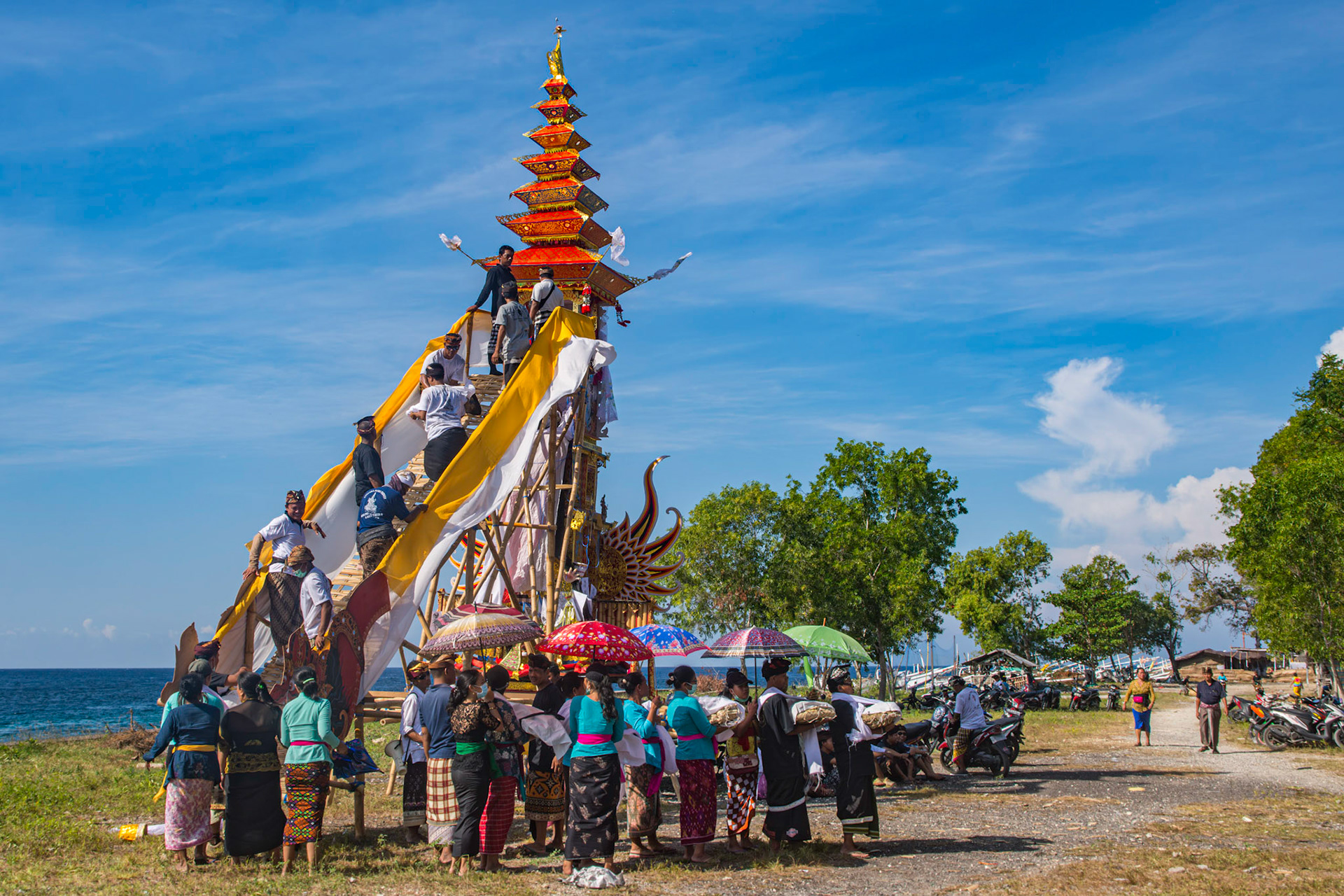
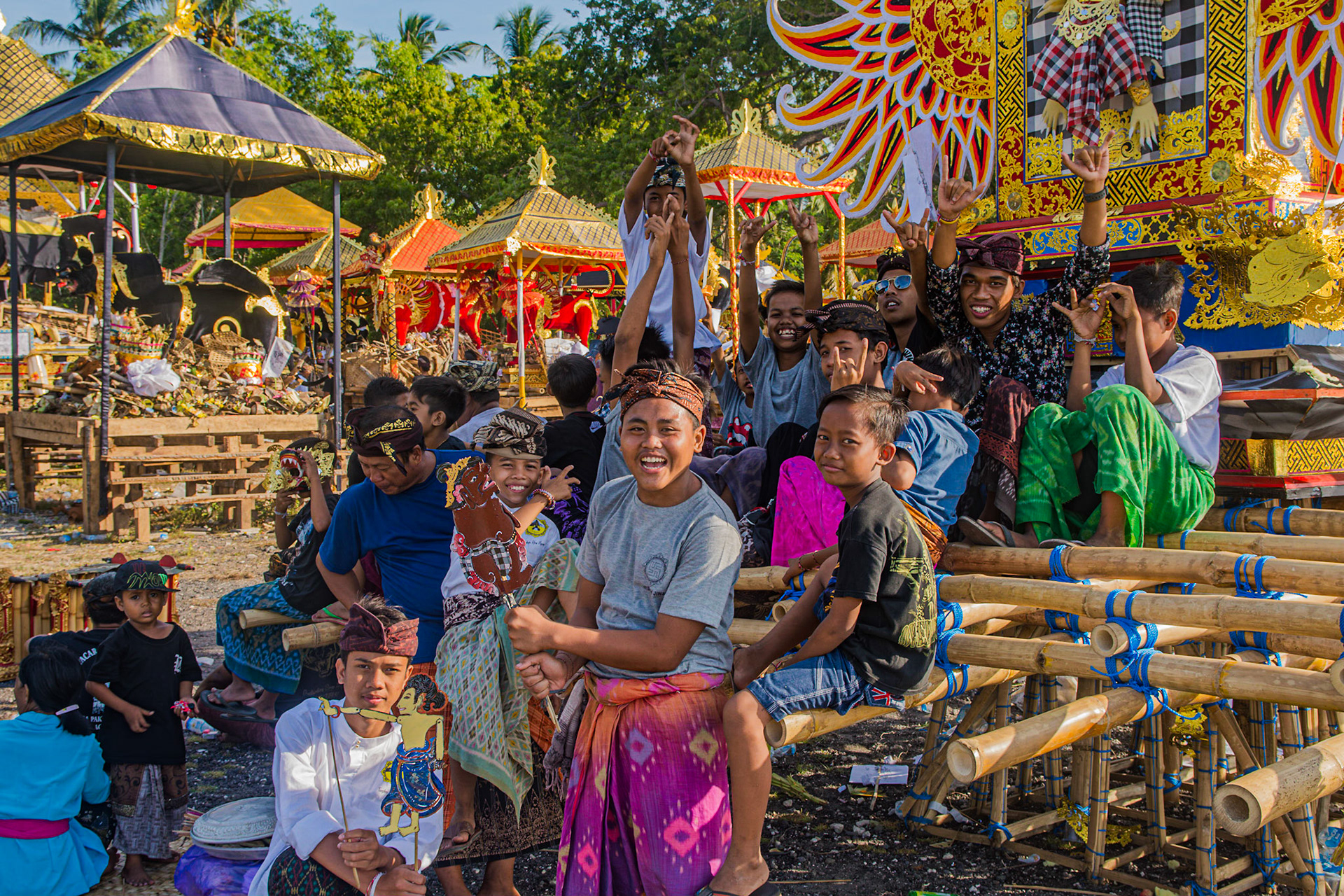


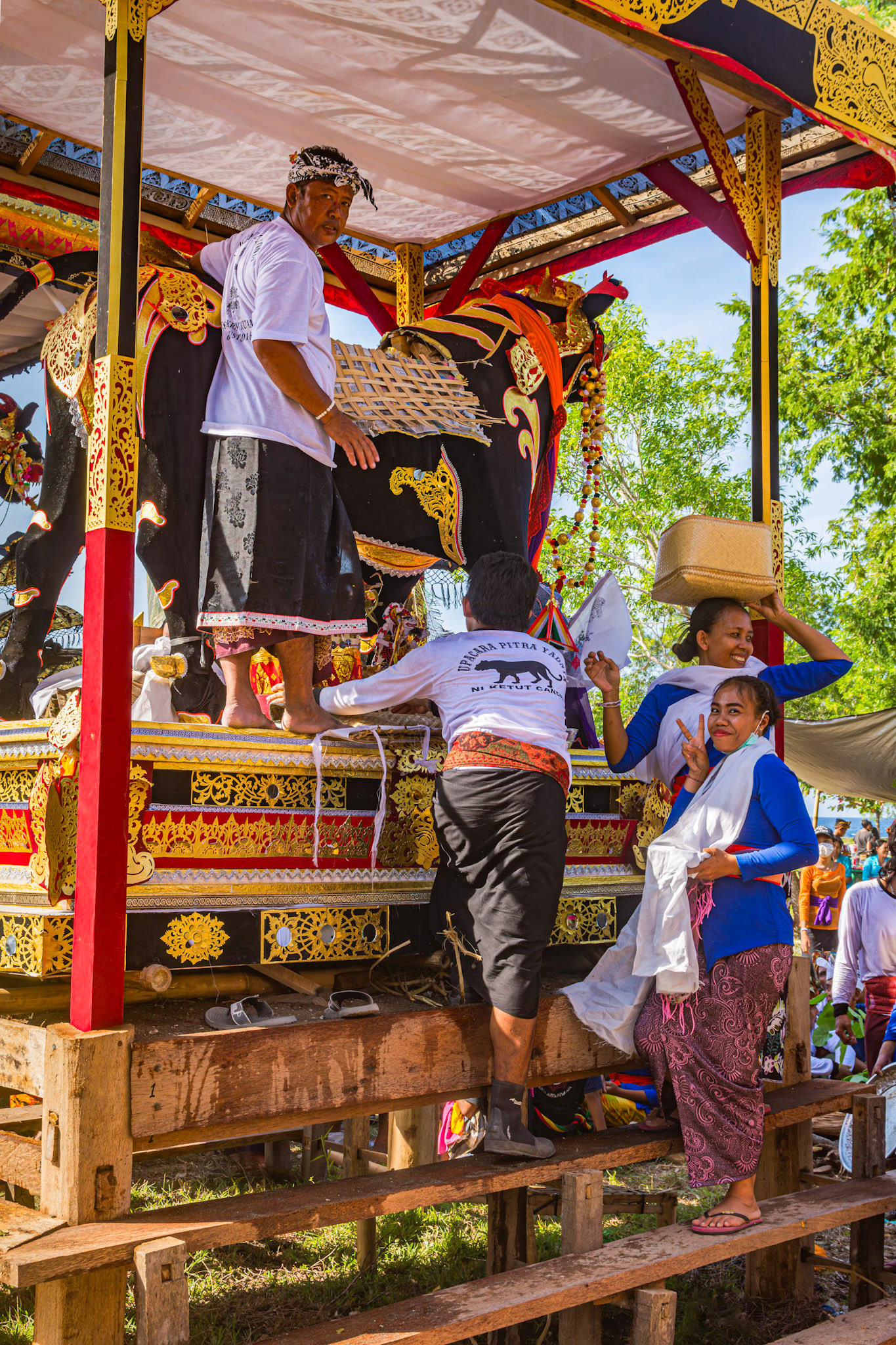
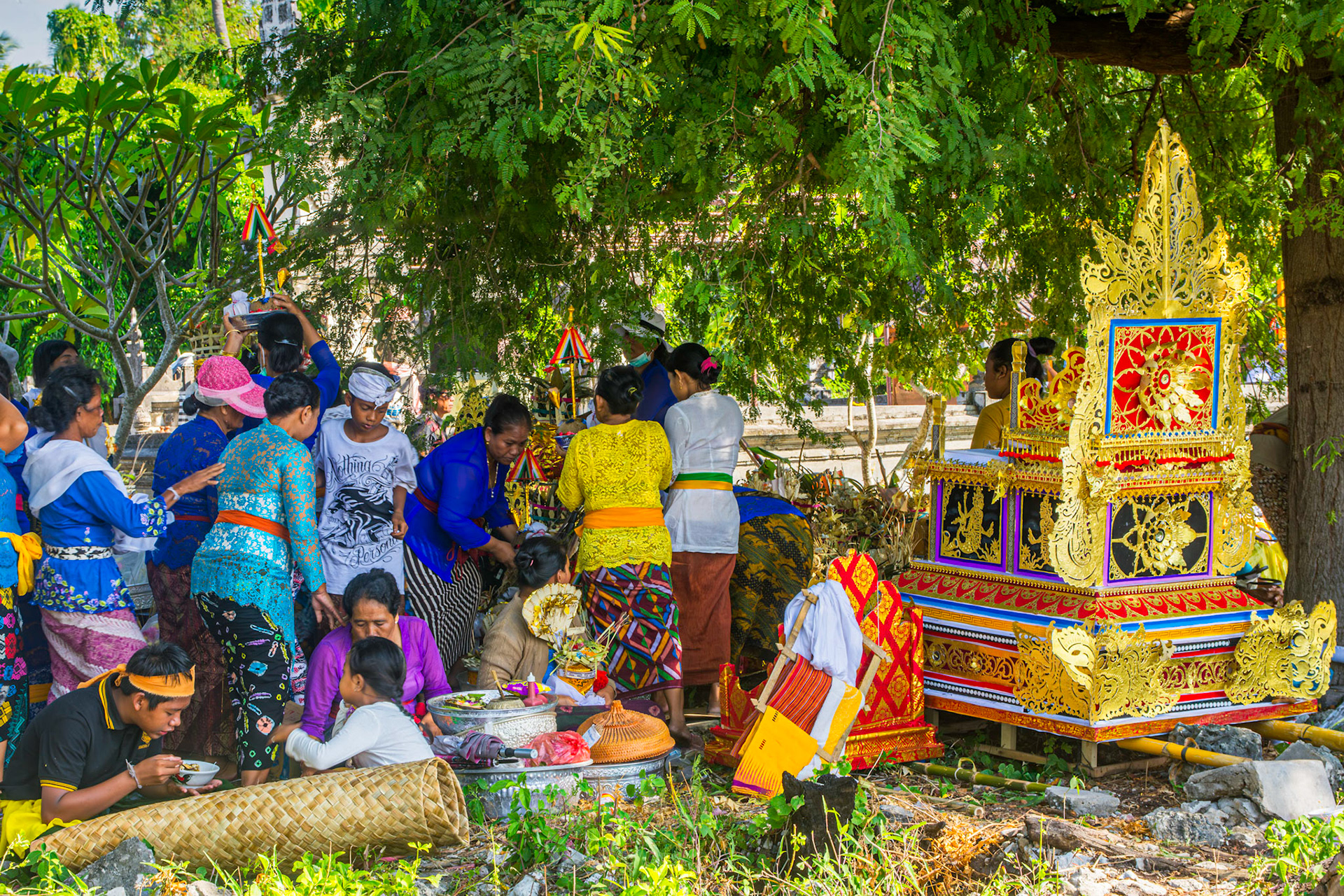

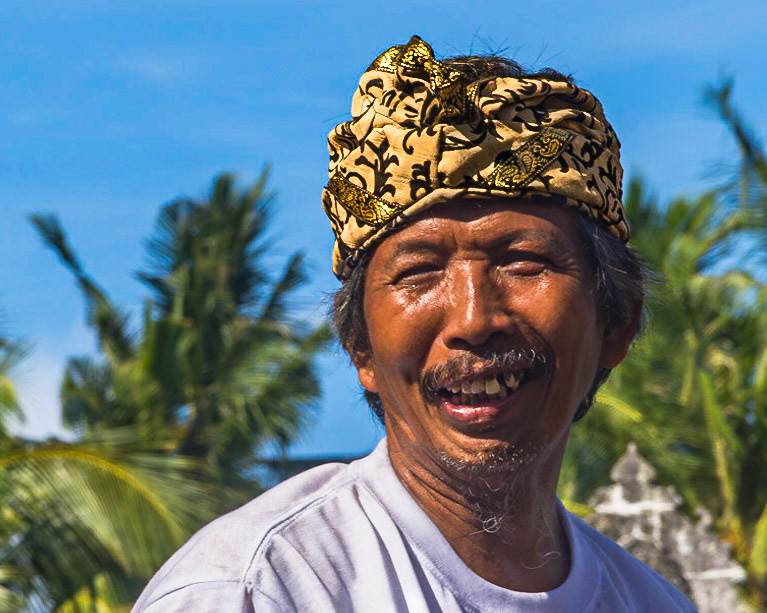

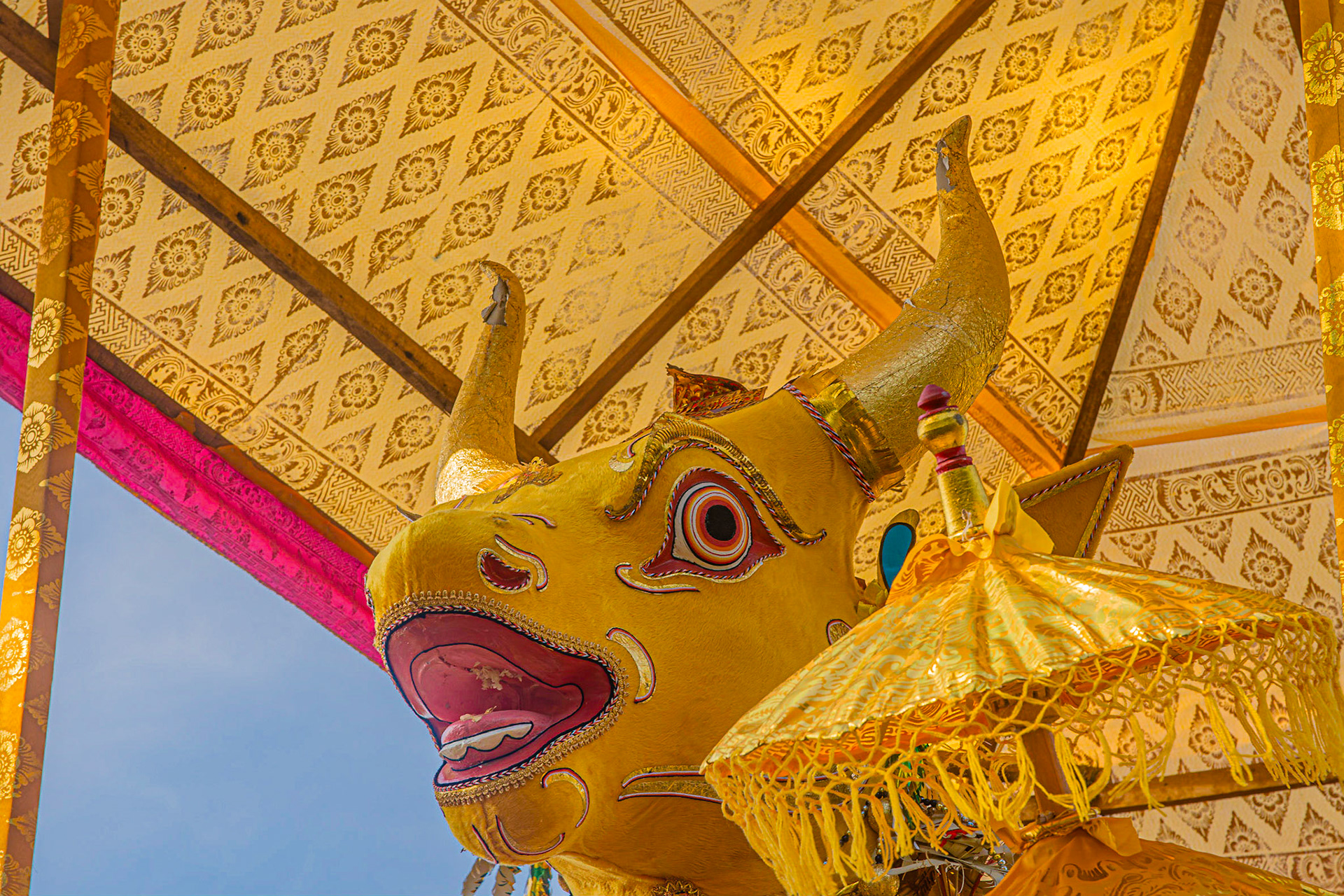
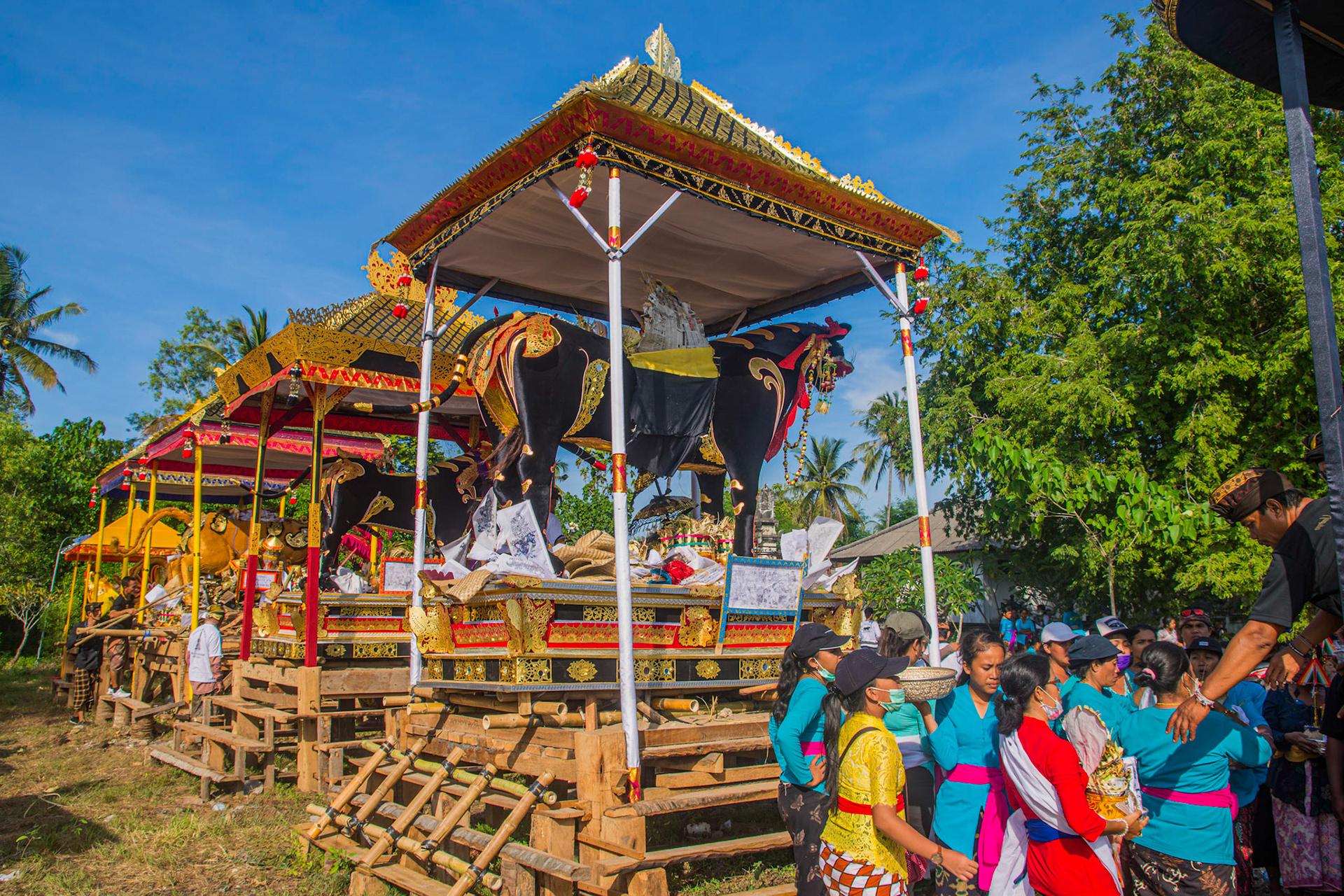
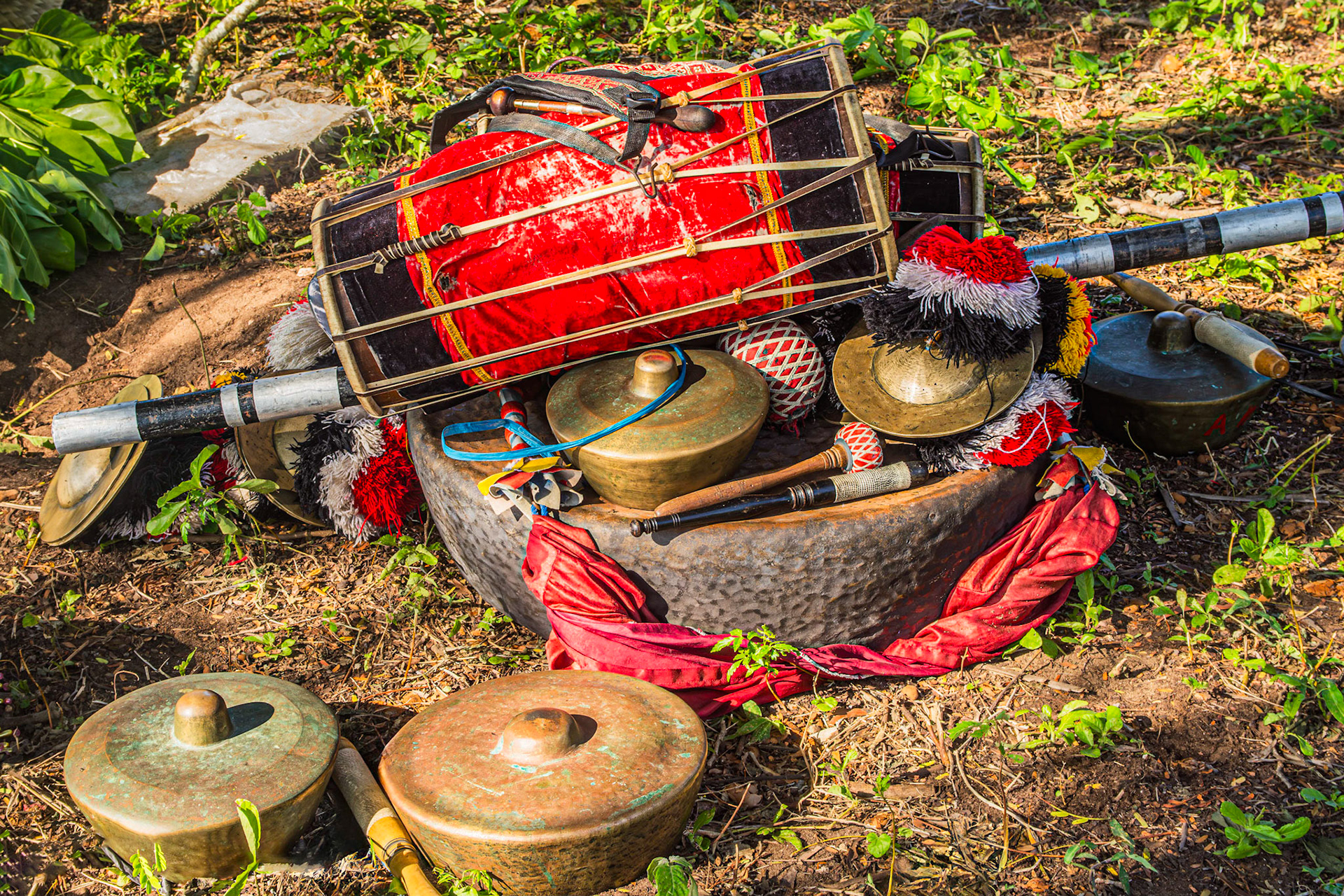
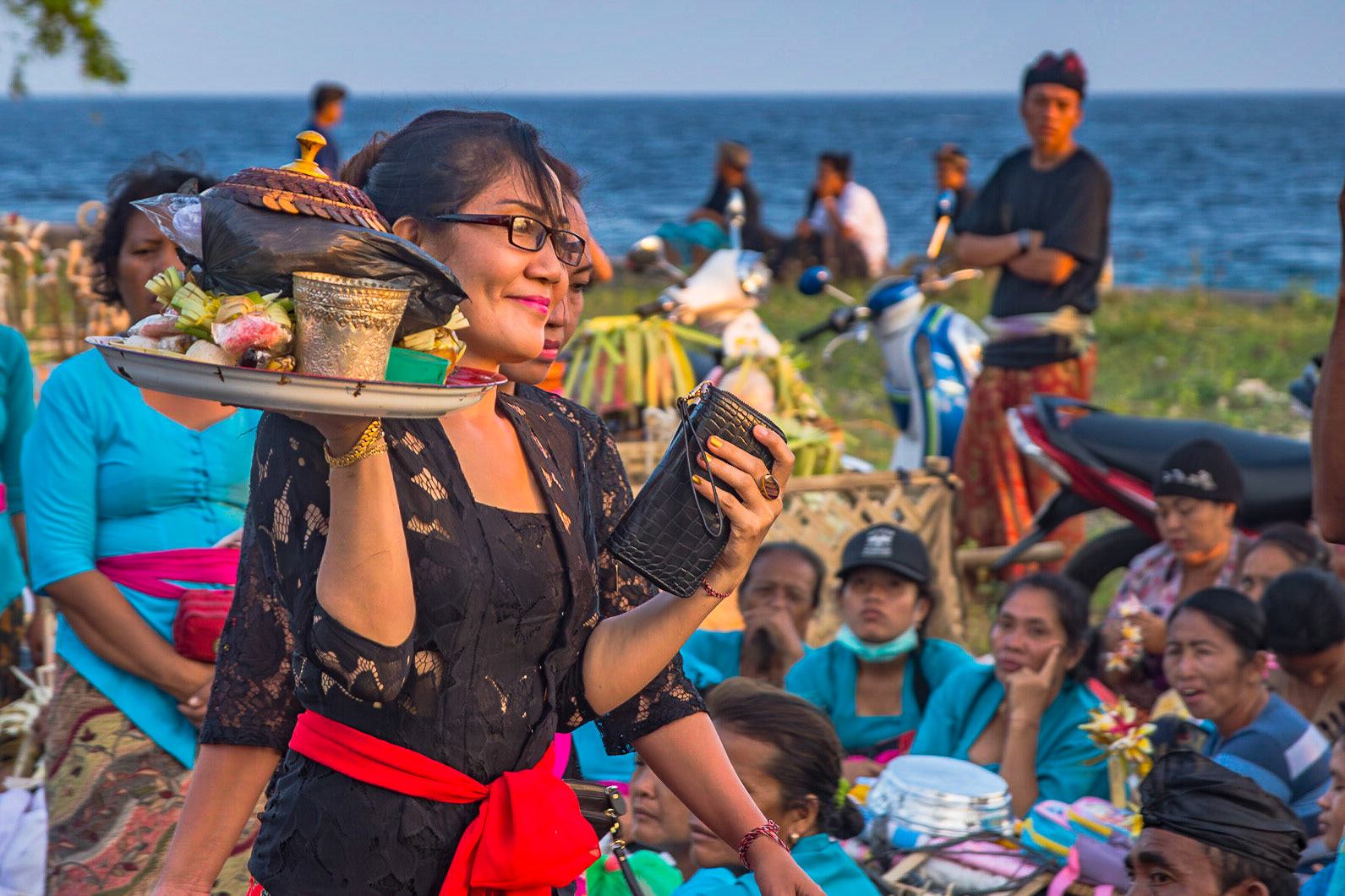
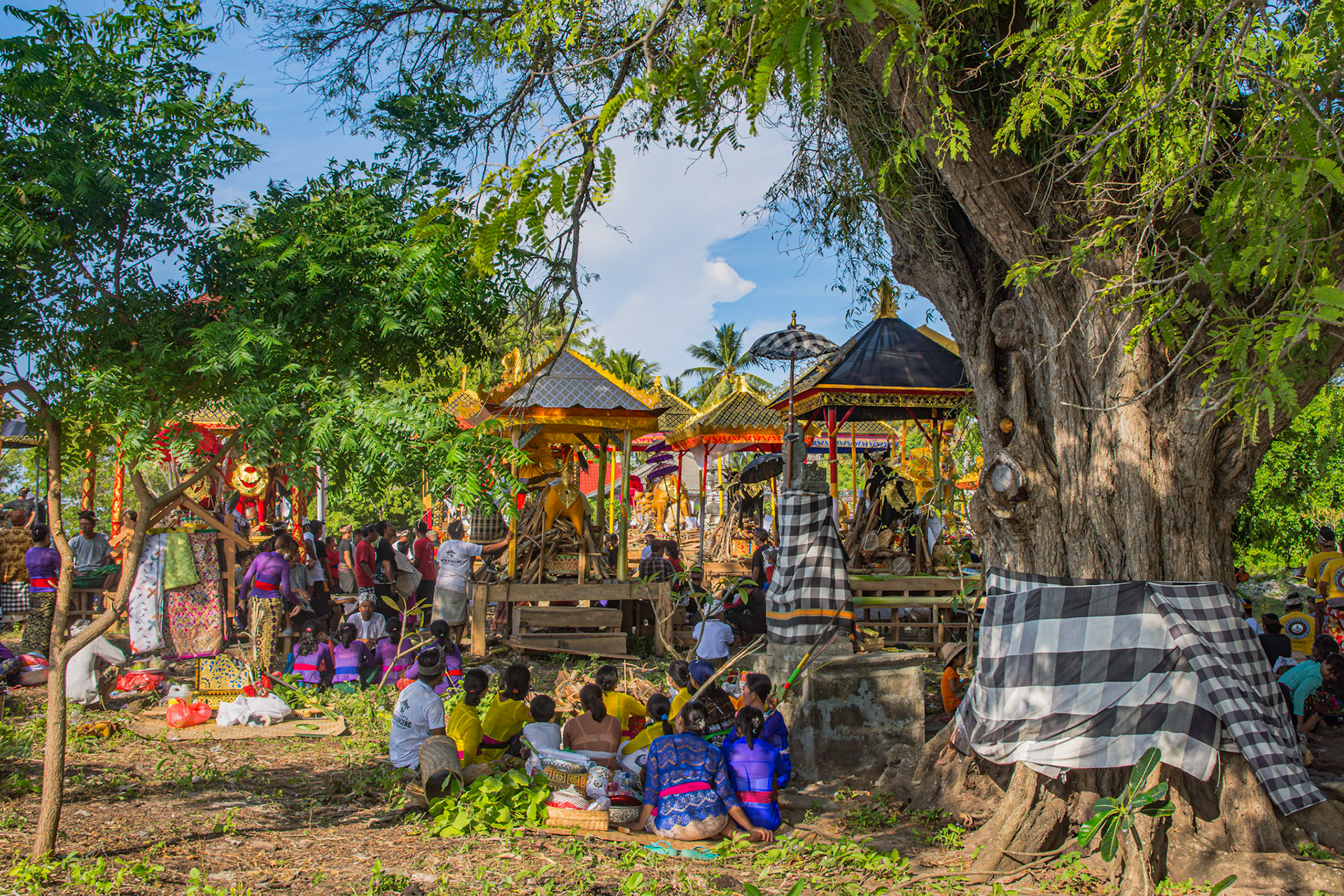
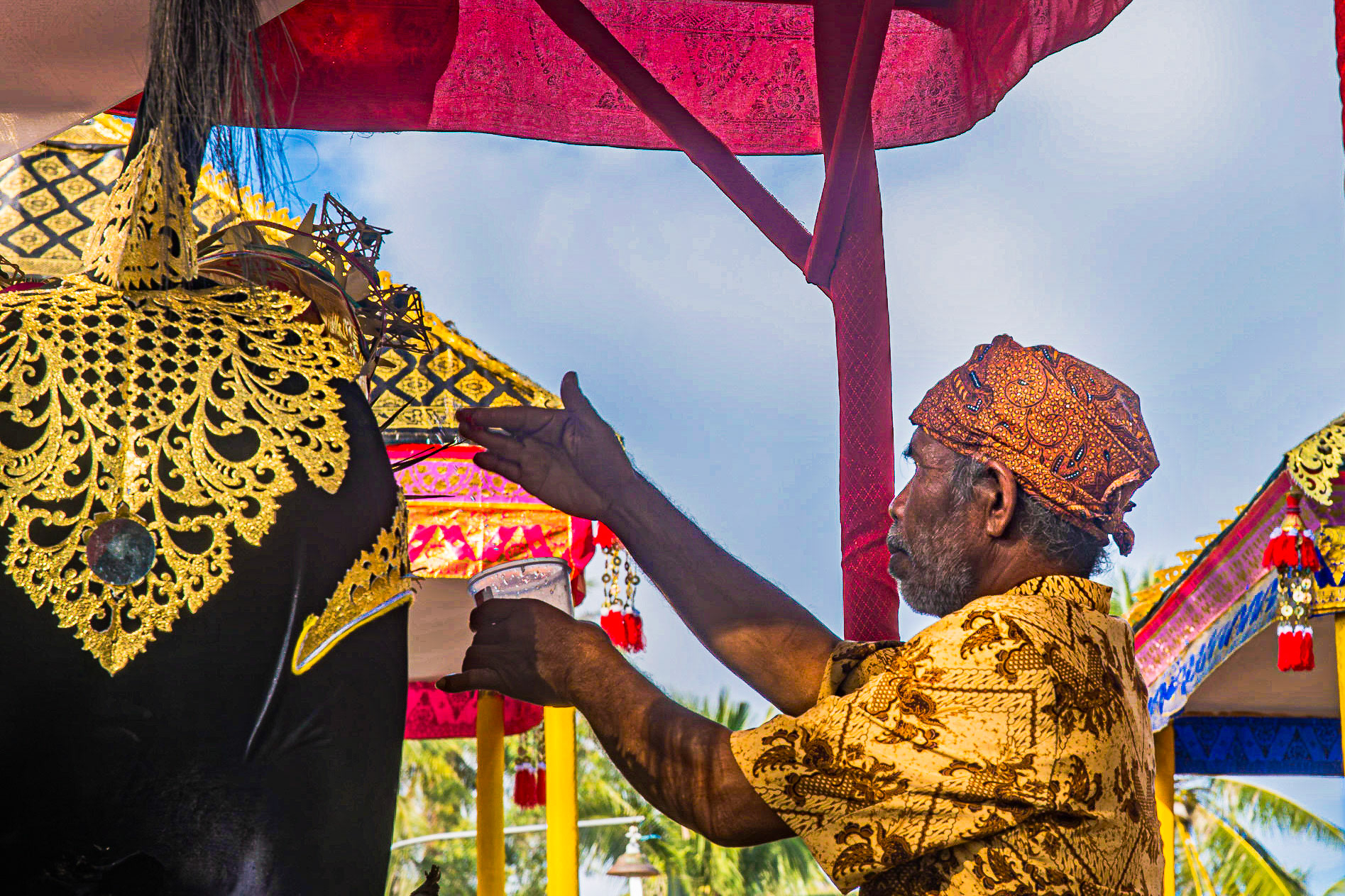
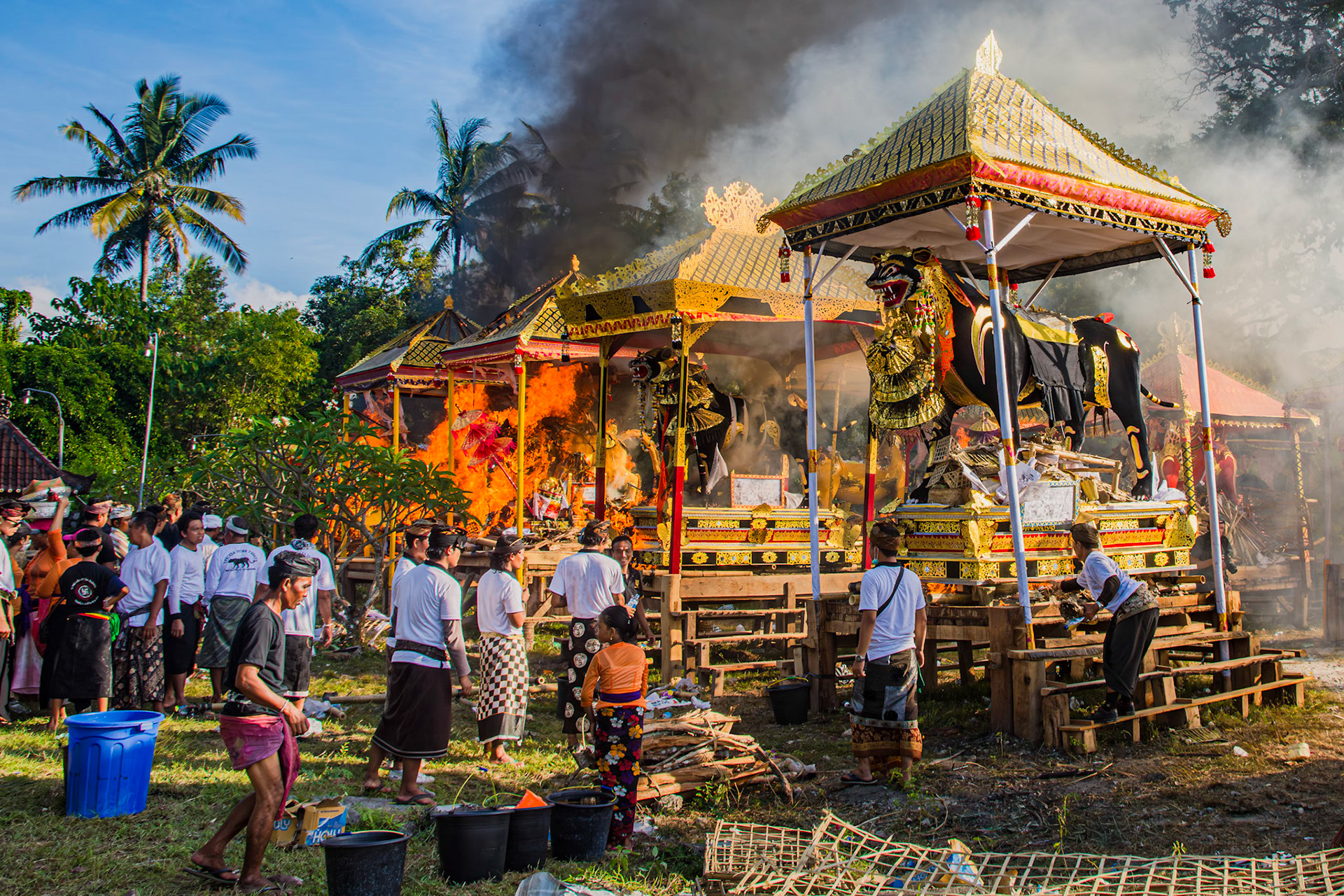
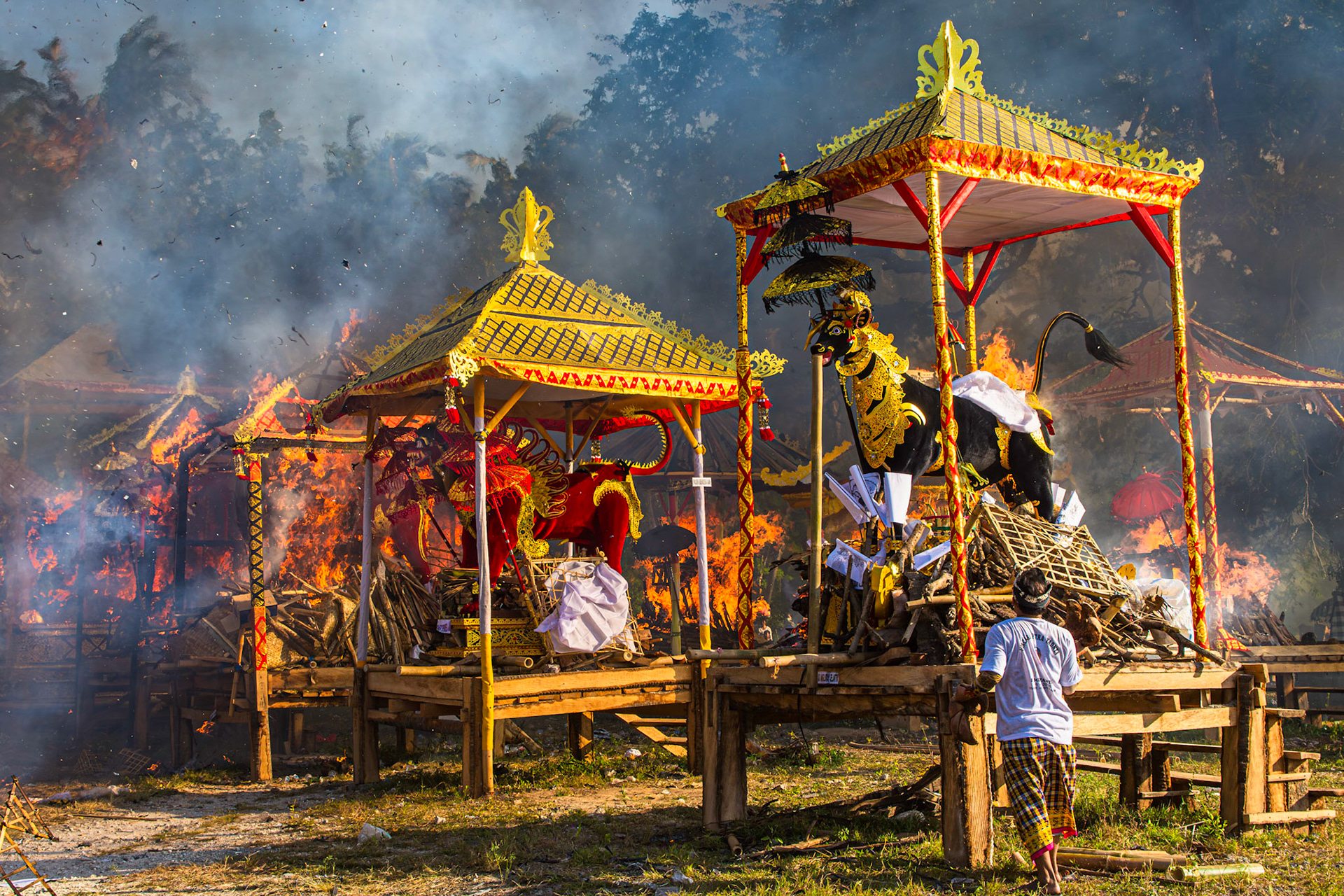
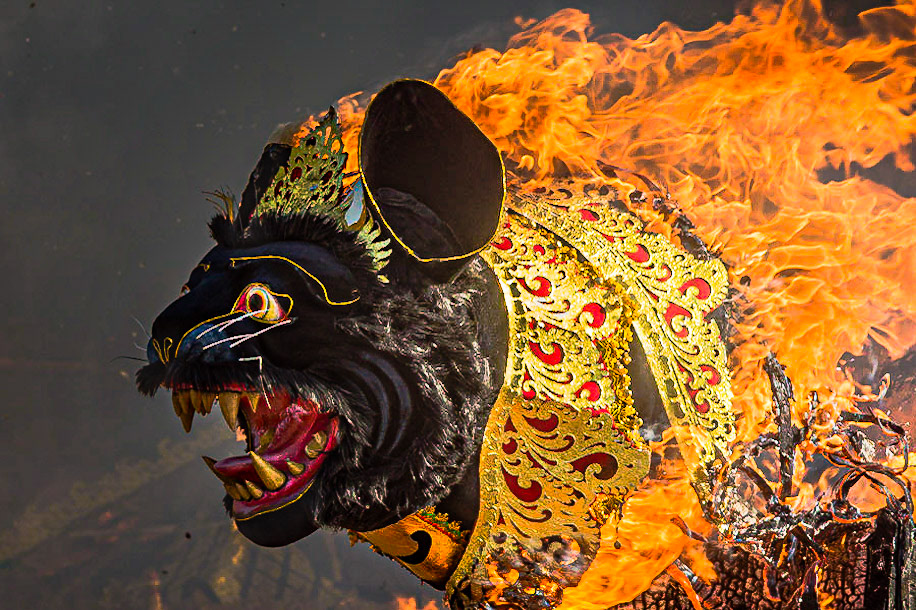

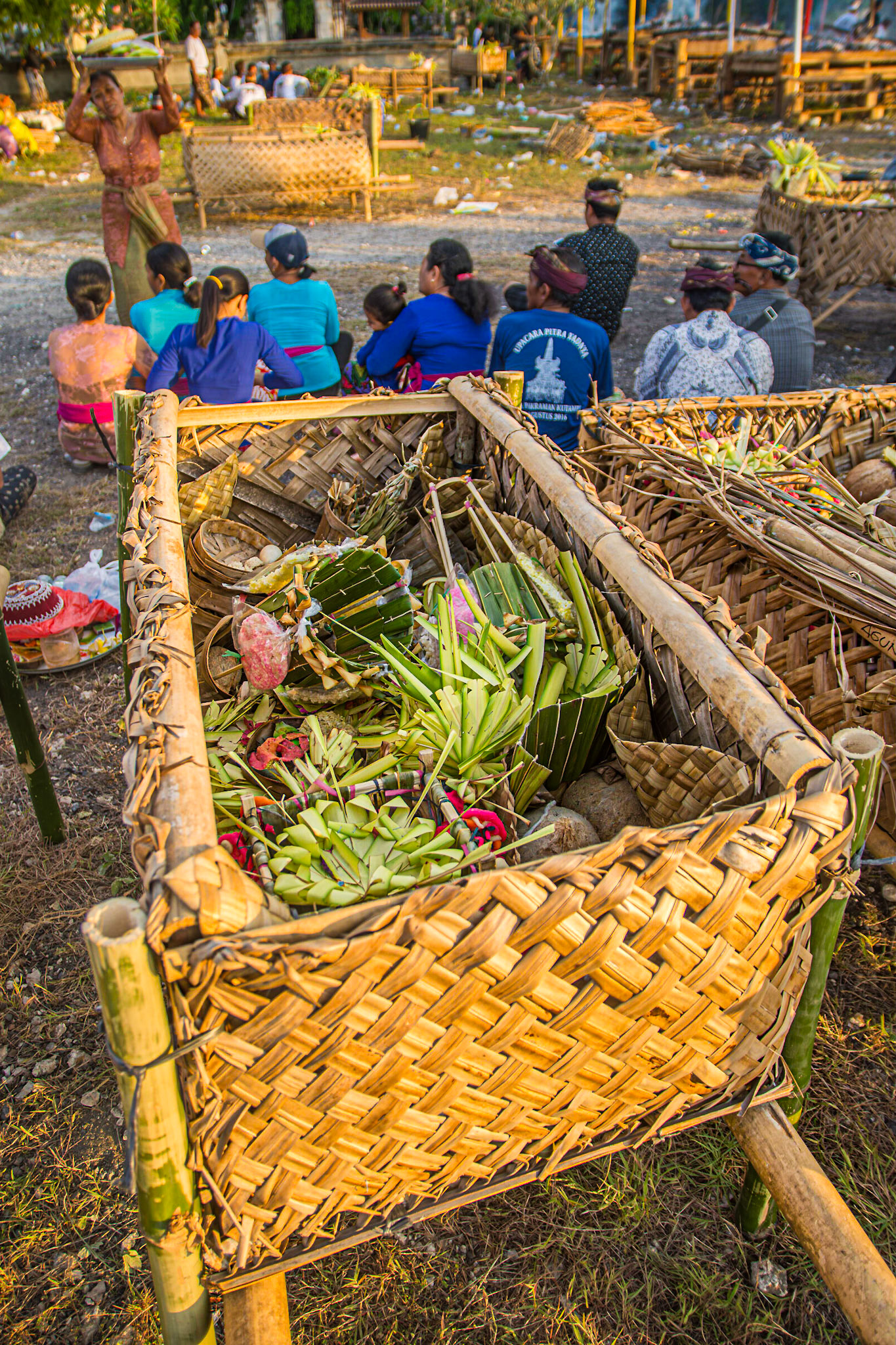


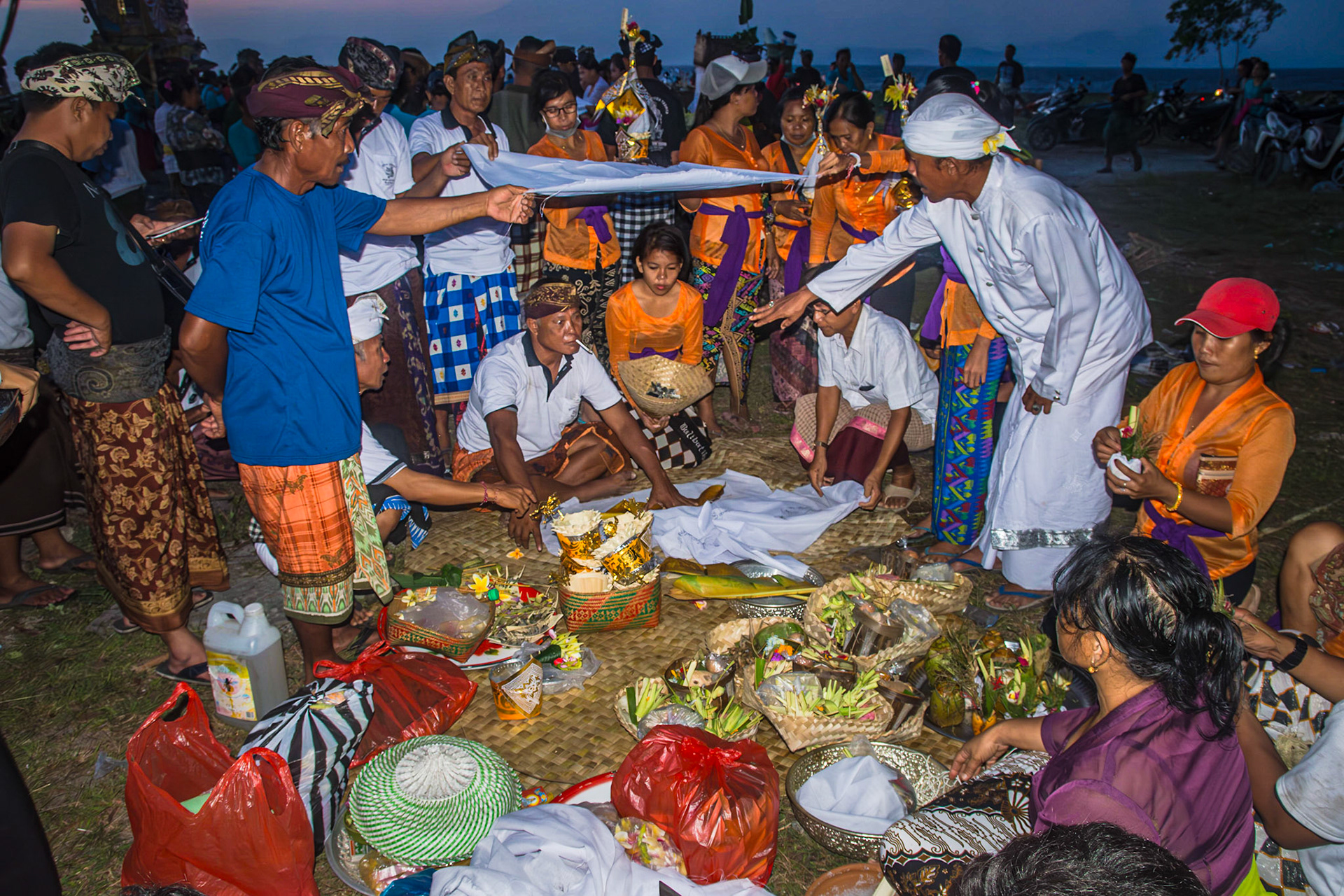

hdr
Quand tout est prêt pour la crémation on lance alors le feu, la tour est quant à elle brulée séparément. Quand les flammes commencent à s'éteindre on met de l'eau sur les cendres afin que la famille les récupère avec les os restant. Ces fragments brûlés sont mis en forme de corps dans un pavillon spécial et ils sont enveloppés de linceul blanc. Les autres fragments sont placés dans une coco jaune qui est elle aussi enveloppée et décorée. La famille du défunt priera pour son âme puis ira à la rivière ou à la mer pour y jeter cette coco ainsi les 5 éléments du corps (terre, air, eau, feu, lumière) sont retournés au cosmos d'où ils sont venus et l'esprit est libéré à la mer.
When everything is ready for cremation, the fire is started, while the tower is burned separately. When the flames begin to extinguish, water is poured over the ashes so that the family can collect them along with the remaining bones. These burnt fragments are shaped into a body in a special pavilion and wrapped in a white shroud. The remaining fragments are placed in a yellow coconut, which is also wrapped and decorated. The family of the deceased prays for the soul, then goes to the river or sea to throw the coco into the water, so that the 5 elements of the body (earth, air, water, fire, light) are returned to the cosmos from whence they came, and the spirit is released into the sea.
